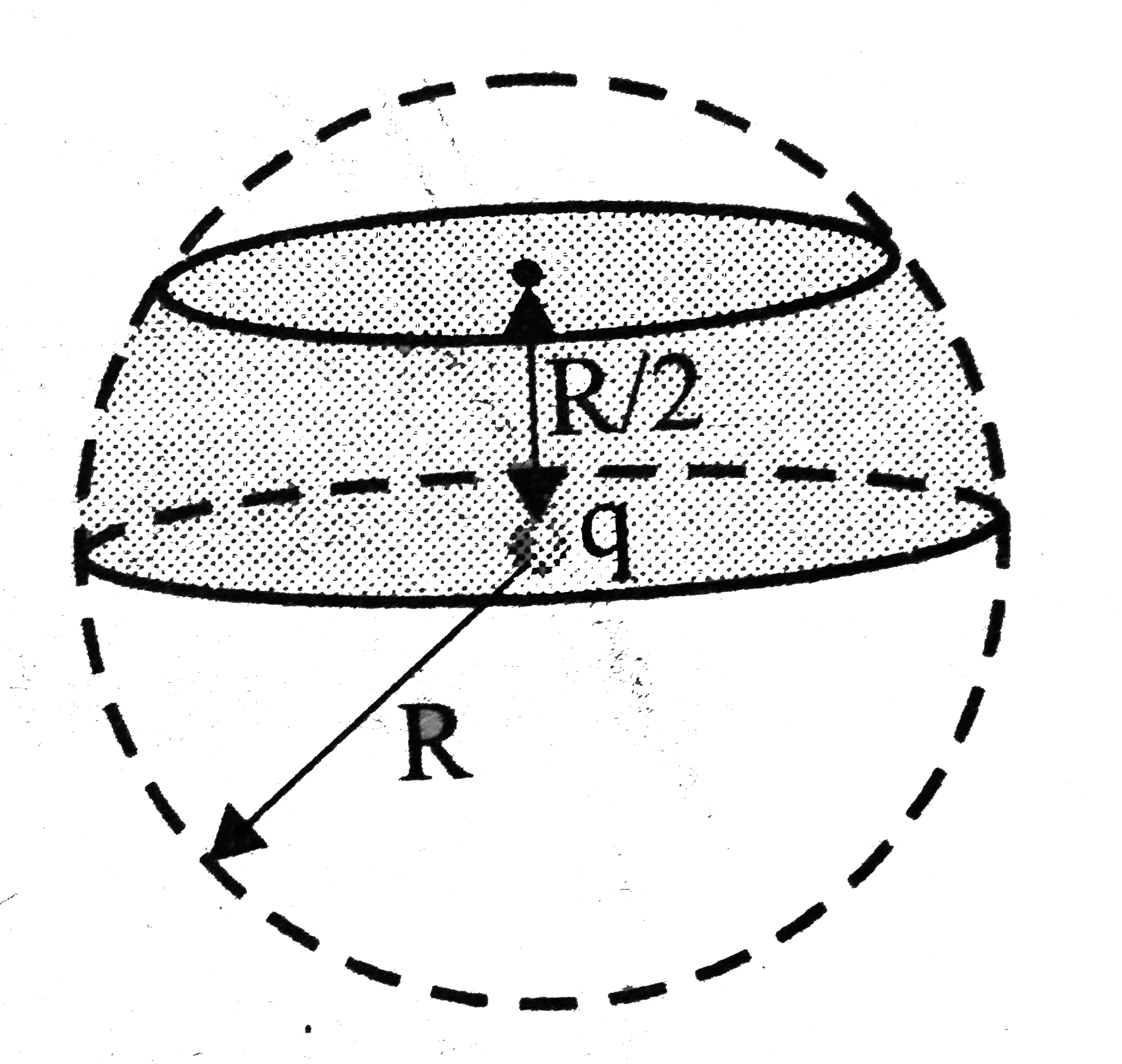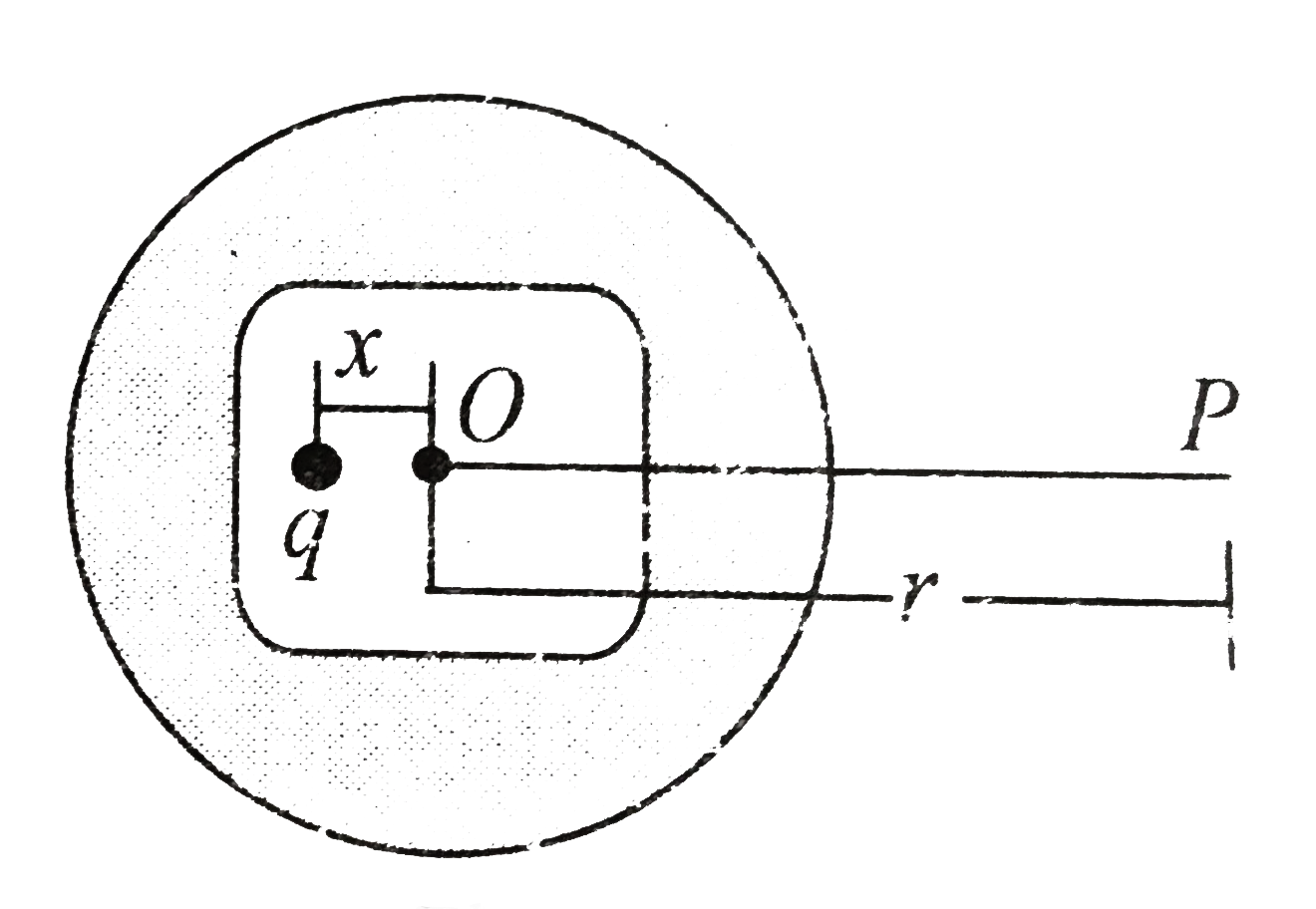Statement-1: When a charged particle is placed in the cavity in a conducting sphere, the induced charge on the outer surface of the sphere is found to be uniformly distributed.
Statement-2 : Conducting surface is equipotential surface.
Statement-1 is True, Statement-2 is True, Statement-2 is a cor.
Statement-1 is True, Statement-2 is True, Statement-2 is not a
Statement-1 is False, Statement-2 is True
Statement-1 is True, Statement-2 is False.
The correct Answer is:A
To analyze the statements provided in the question, we can break down the solution into clear steps:
Step 1: Understand the Setup
- We have a conducting spherical shell with a cavity inside it. A charged particle (let's say charge Q) is placed in this cavity.
Hint 1: Visualize the conducting sphere and the charge inside it. Remember that conductors allow free movement of charges.
---
Step 2: Induction of Charges
- The presence of charge Q in the cavity induces a charge of −Q on the inner surface of the conducting shell. This is due to electrostatic induction, where the conductor rearranges its charges to maintain electrostatic equilibrium.
Hint 2: Recall that the total induced charge on the inner surface must equal the charge placed inside the cavity.
---
Step 3: Charge Distribution on the Outer Surface
- Since the inner surface has a charge of −Q, to maintain overall neutrality, a charge of +Q will appear on the outer surface of the conducting shell.
Hint 3: Remember that the total charge on the conductor must remain constant and equal to the initial charge placed inside.
---
Step 4: Repulsion Among Charges
- The positive charges on the outer surface will repel each other due to electrostatic forces. In a conductor, charges are free to move, and they will distribute themselves to minimize repulsion.
Hint 4: Think about how charges behave in a conductor and how they try to maximize their distance from each other.
---
Step 5: Uniform Distribution of Charge
- As the positive charges repel each other, they will move to the outermost surface of the conductor. Eventually, they will distribute themselves uniformly across the outer surface of the sphere, achieving a constant surface charge density.
Hint 5: Consider the geometry of the sphere and how charges would naturally spread out to maintain equilibrium.
---
Step 6: Equipotential Surface
- Since the charges on the outer surface are uniformly distributed, the electric potential at every point on this surface is the same. Therefore, the conducting surface acts as an equipotential surface.
Hint 6: Recall that in electrostatics, conductors in equilibrium have the same potential throughout their surface.
---
Step 7: Conclusion
- Both statements are correct:
- Statement 1: The induced charge on the outer surface of the sphere is uniformly distributed.
- Statement 2: The conducting surface is an equipotential surface.
- Statement 2 provides the correct explanation for Statement 1.
Final Answer: Both statements are true, and Statement 2 is the correct explanation for Statement 1.
---
- We have a conducting spherical shell with a cavity inside it. A charged particle (let's say charge Q) is placed in this cavity.
- The presence of charge Q in the cavity induces a charge of −Q on the inner surface of the conducting shell. This is due to electrostatic induction, where the conductor rearranges its charges to maintain electrostatic equilibrium.
- Since the inner surface has a charge of −Q, to maintain overall neutrality, a charge of +Q will appear on the outer surface of the conducting shell.
- The positive charges on the outer surface will repel each other due to electrostatic forces. In a conductor, charges are free to move, and they will distribute themselves to minimize repulsion.
- As the positive charges repel each other, they will move to the outermost surface of the conductor. Eventually, they will distribute themselves uniformly across the outer surface of the sphere, achieving a constant surface charge density.
- Since the charges on the outer surface are uniformly distributed, the electric potential at every point on this surface is the same. Therefore, the conducting surface acts as an equipotential surface.
- Both statements are correct:
- Statement 1: The induced charge on the outer surface of the sphere is uniformly distributed.
- Statement 2: The conducting surface is an equipotential surface.
- Statement 2 provides the correct explanation for Statement 1.
Topper's Solved these Questions
- BOOK - ALLENCHAPTER - MISCELLANEOUSEXERCISE - Comprehension 15videos
MISCELLANEOUS
- BOOK - ALLENCHAPTER - MISCELLANEOUSEXERCISE - Comprehension 28videos
MISCELLANEOUS
- BOOK - ALLENCHAPTER - MISCELLANEOUSEXERCISE - Exersice-037videos
MISCELLANEOUS
- BOOK - ALLENCHAPTER - KINEMATICS (MOTION ALONG A STRAIGHT LINE AND MOTION IN A PLANE)EXERCISE - BEGINNER S BOX-78videos
KINEMATICS (MOTION ALONG A STRAIGHT LINE AND MOTION IN A PLANE)
- BOOK - ALLENCHAPTER - PHYSICAL WORLD, UNITS AND DIMENSIONS & ERRORS IN MEASUREMENT EXERCISE - EXERCISE-IV8videos
PHYSICAL WORLD, UNITS AND DIMENSIONS & ERRORS IN MEASUREMENT
Similar Questions
Knowledge Check
- Question 1 - Select One
A conducting sphere is negatively charged. Which of the following statements is true?
AThe charge is uniformly distributed throughout the entire volume.BThe charge is located at the center of the sphere.CThe charge is located at the bottom of the sphere because of gravity.DThe charge is uniformly distributed on the surface of the sphere.
Statement-1 : If a point charge q is placed in front of an inifinite grounded conducting plane surface, the point charge will experience a force.
Statement-2: This forc is due to the induced charge on the conducing surface which is at zero potentialView SolutionConisder a neutral conducting sphere. A poistive point charge is placed outisde the sphere. The net charge on the sphere is then
View SolutionConisder a neutral conducting sphere. A poistive point charge is placed outisde the sphere. The net charge on the sphere is then
View SolutionAll charge on a conductor must reside on its outer surface.' This statement is true
View SolutionStatement-1 : A conducting sphere charged upto 50V is placed at the centre of a conducting shell charged upto 100V and connected by a wire. All the charge of the shell flows to the sphere
Statement-2: The positive charge always flows from higher to lower potential.View SolutionA point charge +q is placed at the centre of a conducting spherical shell of inner radius a and outer radius b. Find the charge appearing on the inner and outer surface of the shell.
View SolutionFlux passing through the shaded surface of a sphere when a point charge q is placed at the center is (radius of the sphere is R)
 View Solution
View Solution


